By now, the world requires SUV on each segment. Large, small, medium, sporty, adventurous, citizens: the important thing is that it has high wheels and a raised driving position. And this new and unpublished Hyundai Bayon goes to respond precisely to this hunger for SUVs: it is a slightly smaller than Kona high wheeled crossover, compared to which it offers a more traditional and less adventurous experience, perfect for everyday life. But what does Hyundai Bayon hide behind its particular aesthetic? Let’s find out together in our first test drive of the version 1.0 100hp T-GDI with iMT manual gearbox.
But what is Hyundai Bayon? The differences with Kona and its bitter rivals
I know what you are thinking starting to read this first contact: but what is Hyundai Bayon? How does it position itself in the market? And especially, how to pronounce? Let’s start immediately from nOme, which you read Beyon, in English. The other questions, on the other hand, are absolutely pertinent, since on paper, the overlap with Kona may seem inevitable. The dimensions are actually quite similar: despite Kona and Bayon resting on two different platforms, the first is 4.20 meters long, while Bayon stops a few centimeters earlier, at 4 meters and 18. The two centimeters of difference are therefore very few: however, the proportions change almost completely, but above all it is the nature of the car and its adopted clientele that are completely different.
Kona is a B-SUV with a very personal, sporty and adventurous aesthetic, also available in the sporty N Line version or in the extreme 280hp N version. Furthermore, inside it is more refined and refined, while from the mechanical point of view we have all the most advanced Hyundai engines, from the turbo petrol to the mild hybrid both petrol and diesel up to the hybrid and the electric version, which we tested a few weeks ago. Finally, Kona in addition to the more mature and hard aesthetics also offers the possibility of four-wheel drive, a rarity in the segment.
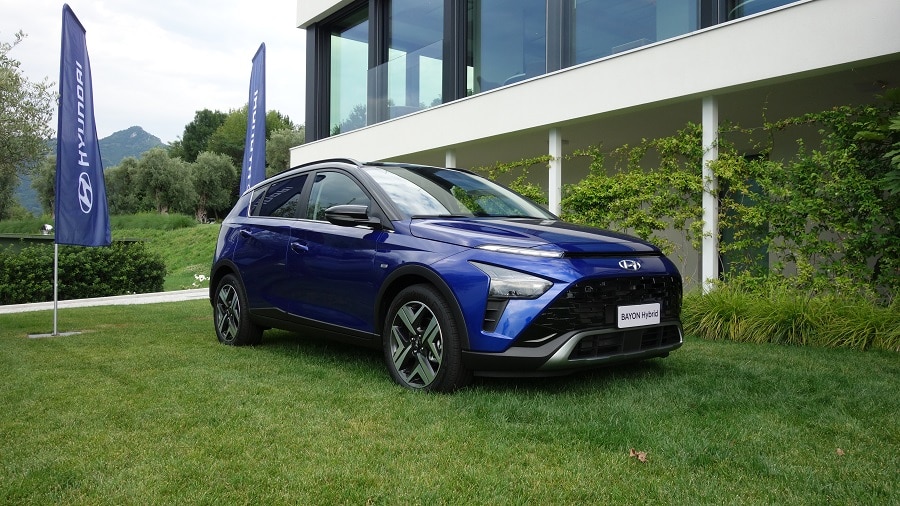
If Kona is therefore a more capable off-road SUV, more sporty and multifaceted, the new Hyundai Bayon attacks another segment, that of city crossovers. It is therefore not a B-SUV equipped with powerful engines, full hybrid engines, four-wheel drive and super innovative technological solutions. Bayon is a city SUV, voted for use in the streets of the center but who does not disdain at all to go outside the inhabited centers for outings or trips.
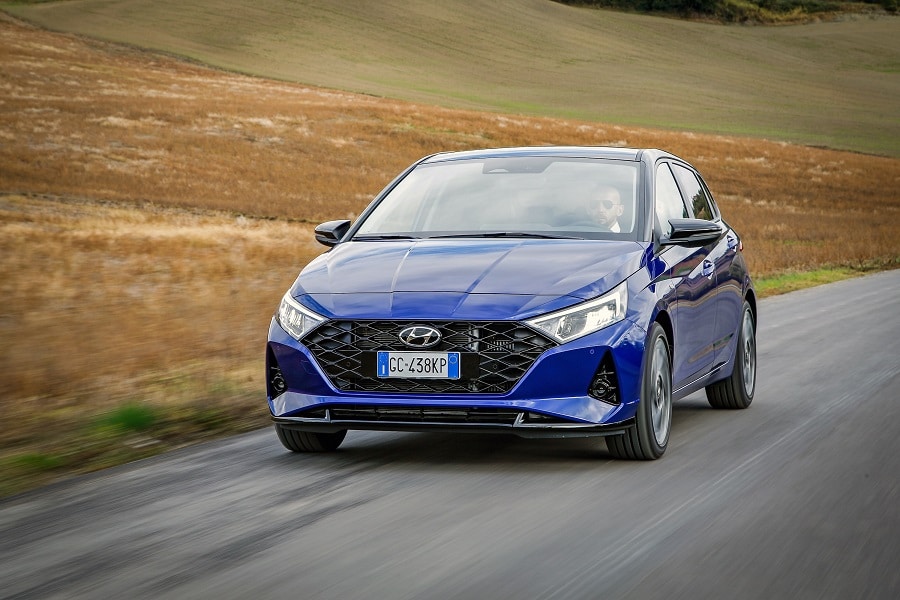
The mechanical base is in fact the same as the i20, of which it resumes the pitch and width, e it has no engines more powerful than 100 hp nor the possibility of all-wheel drive. Bayon focuses on excellent habitability, especially in terms of trunk and space for rear passengers. The new Korean SUV is not even available on request with all-wheel drive, and the ground clearance is good, suitable for some dirt roads, certainly not the most serious off-road. Furthermore, Bayon starts with a very simple engine, the 84 HP 1.2 petrol engine, which will soon also be available with GPL, a rarity in this segment.
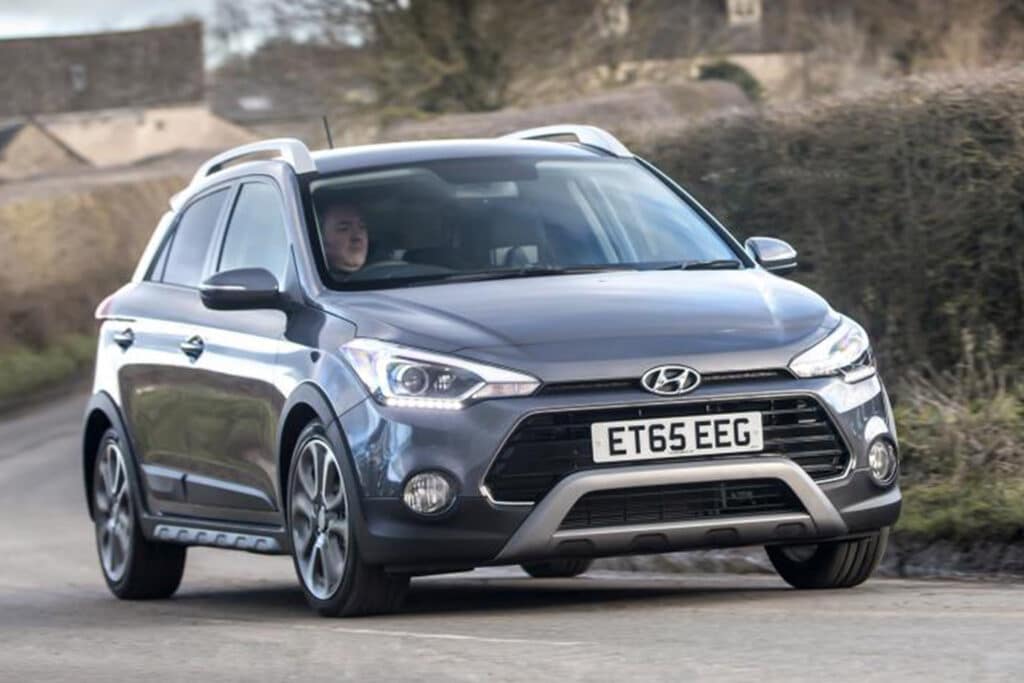
Bayon is therefore not a rival to Kona, but they are complementary: Kona offers more sportiness, optional all-wheel drive and a much more personal and recognizable style. Bayon, on the other hand, focuses on convenience and space, with a nod to the compact segment B. Hyundai’s new B-SUV is therefore the replacement for the i20 Active, the “SUVvizzato” version of the previous i20. Its rivals? The B-SUVs that aim for convenience and space rather than sportiness and off-road, such as Ford Ecosport, SEAT Arona, VW T-Cross, Citroen C3 Aircross and the “half-sister” KIA Stonic, which as a target and content is very close to Bayon.
From the outside, it is personal and original: Hyundai Bayon stands out
But now enough to talk about the idea behind the birth of Bayon, and let’s see what this new compact SUV from Hyundai offers, starting from one of the most important talking points since its launch: aesthetics. From the photos, Hyundai Bayon has divided the opinions of fans a lot. There are those who immediately considered it very original and successful, and others who just did not go down. After having had some doubts myself from the first photos disclosed, Hyundai Bayon turned out to be the classic little photogenic car, with an extra gear live.
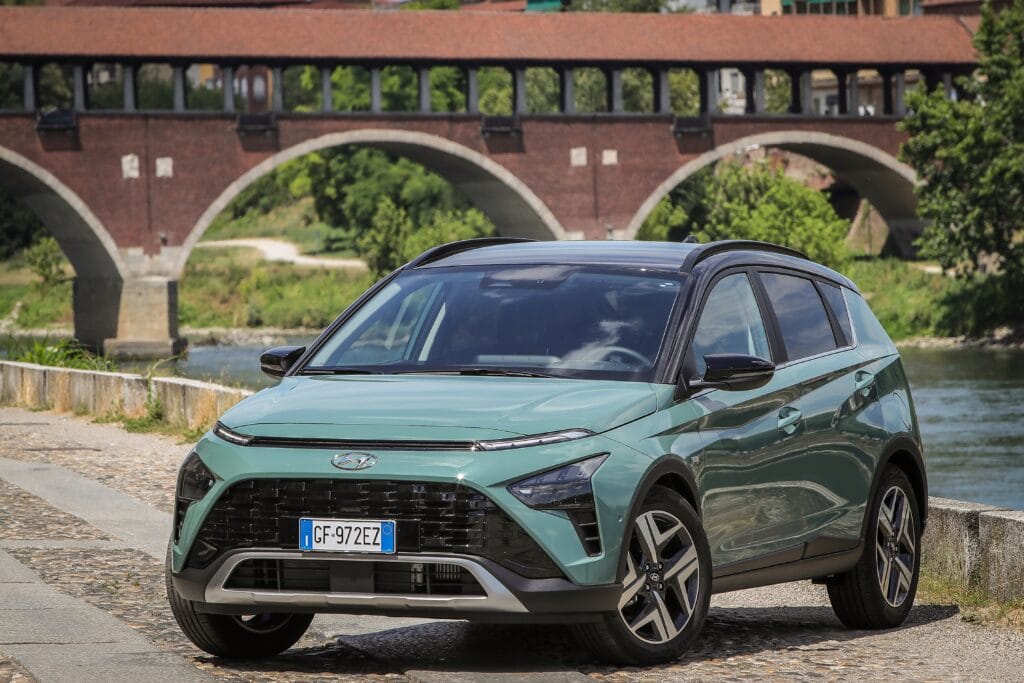
The aesthetic is original and immediately recognizable, following Hyundai’s new “Sensous Sportiness” design language which, starting from the little sister i20, is making its way across the entire range of the Korean manufacturer. The front is the most successful part: the large front air intake is upside down compared to the usual one, with a narrower upper part and a tendency to widen downwards. This big mouth gives the car a wider and more massive look, and goes well with the headlights on two heights by Bayon. The upper part of the headlights houses the daytime running lights and indicators, both with LEDs as standard. These two DRLs are then “joined” by a thin and horizontal air intake, which is somewhat reminiscent of the latest Audi products. The central part of the projector, on the other hand, is halogen on the basic XLine version and full LED on the top of the XClass range.
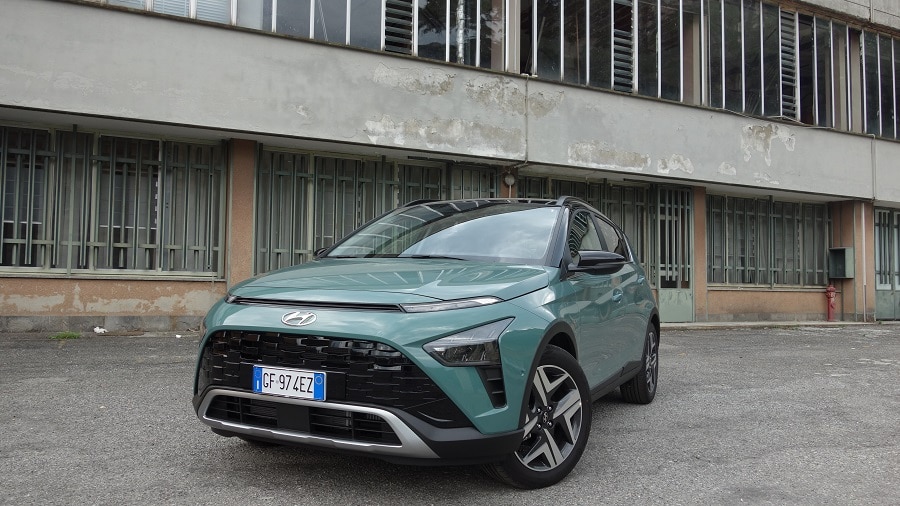
The front is then “nasty” from silver bumper which gives it a more SUV look, and is also reminiscent of the previous i20 Active. The hood is then rather short but slender, to seal the proportions that wink at a compact rather than a hard and pure SUV. From the side it is noted that Bayon has a good ground clearance, while the height of the car body is not excessive. Bayon in fact stops at a height of 1.50 m, exactly halfway between 20 (5 cm lower) and Kona (5 cm higher). The proportions, however, are a true crossover, with the high waistline and the inevitable raw plastic wheel arches. The side is then moved by two scratches at the wheel arches, taken from the latest Hyundai, while on request you can choose the contrasting roof.
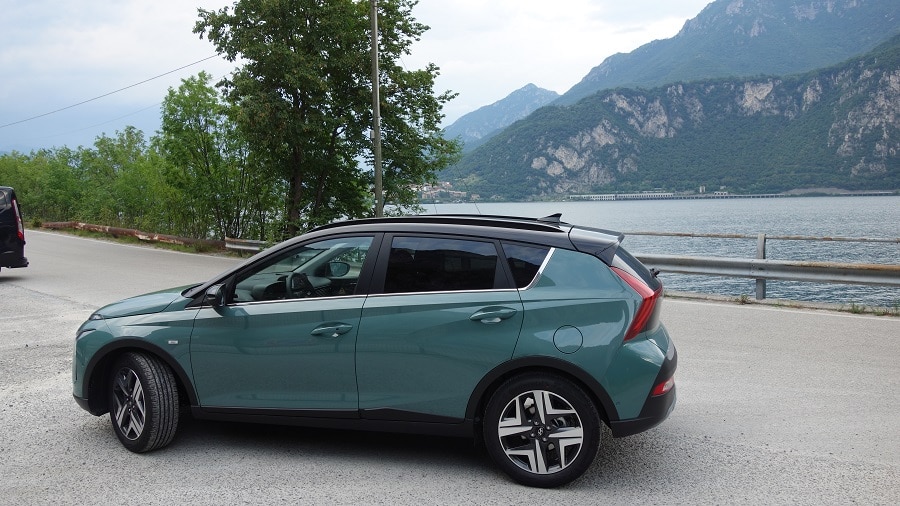
The standard wheels are in 16 ″ alloy, the same as the i20, while on the XClass set-up you can opt for 17 with a new design. The major discussions on Bayon then came for the queue, to say the least original. The tail is in fact characterized by a dark plastic finish of the rear bumper, embellished as on the front by a silver bumper. In addition, the tailgate in part in glossy black, standard on all versions, stands out on the whole rear. The aesthetic impact is quite strong, but live it makes the rear original and more slender than it would be if it were all in body color. The headlights then have one very special arrow-shaped luminous signature, and are characterized by a three-dimensional cantilevered structure. Plus, they are connected by a reflective strip, the only reference in all the exterior to the little sister i20.
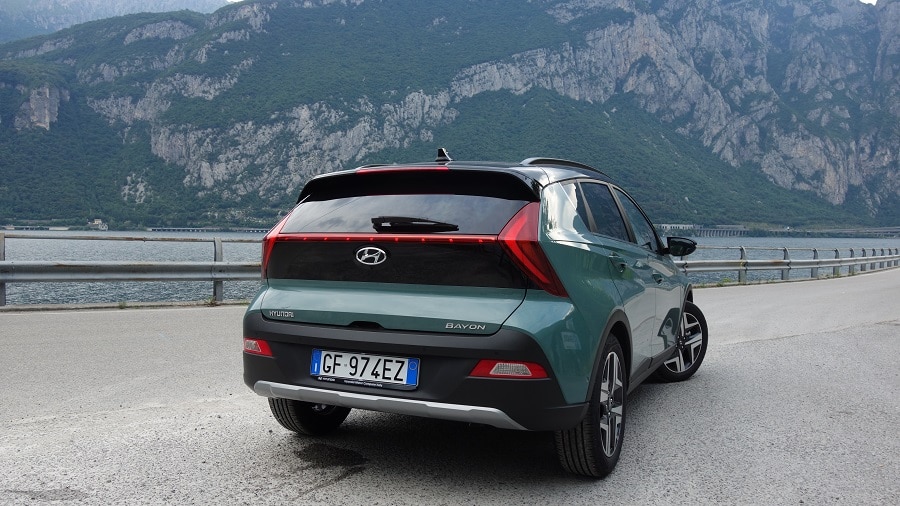
Although Kona is the brand’s original SUV, Bayon is also not trivial, quite the opposite. The small Korean SUV sports original and different lines from the usual, which make it stand out from the usual SUVs in this segment. Certainly, however, it is not a design that can please everyone. What do you think about it? You like it? Let us know in the comments!
Inside, the relationship with the i20 is very clear: technology and many gadgets, but the materials …
If outside Hyundai Bayon it stood out a lot from its sister “low shot” i20, inside the kinship with the compact is really evident. The dashboard and much of the technology is in fact taken up completely by the i20, starting from the lines of the dashboard and center console. Hyundai Bayon in fact sports the same original and different dashboard than usual, with the horizontal striped texture of the air vent which is taken up to full width. The cantilevered infotainment screen stands out, along with separate and physical climate controls.
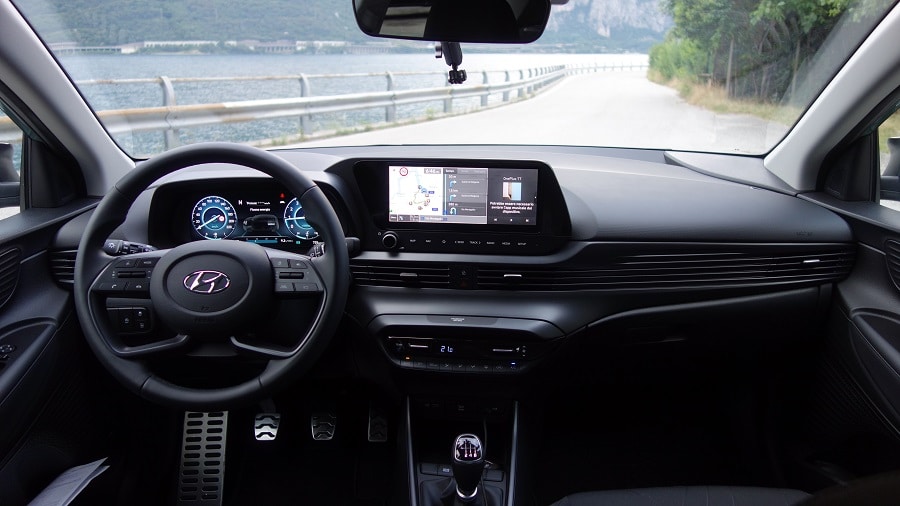
The steering wheel, center console and digital instrument cluster are identical to the i20. This means that the ergonomics and the quality of the assemblies are very good, but the plastic used for the dashboard is not the softest. Even from an aesthetic point of view, the dashboard is a bit shabby, and it is a real shame because the rest of the interior is really well done and thought out. Everything is well laid out, comfortable and ergonomic, and all the most important keys are physical for maximum practicality in travel. The aesthetic situation then improves a lot by choosing the automatic climate control, which with a glossy finish and a modern look makes the interior more pleasant than the versions with the classic rotellone of the manual air conditioning.
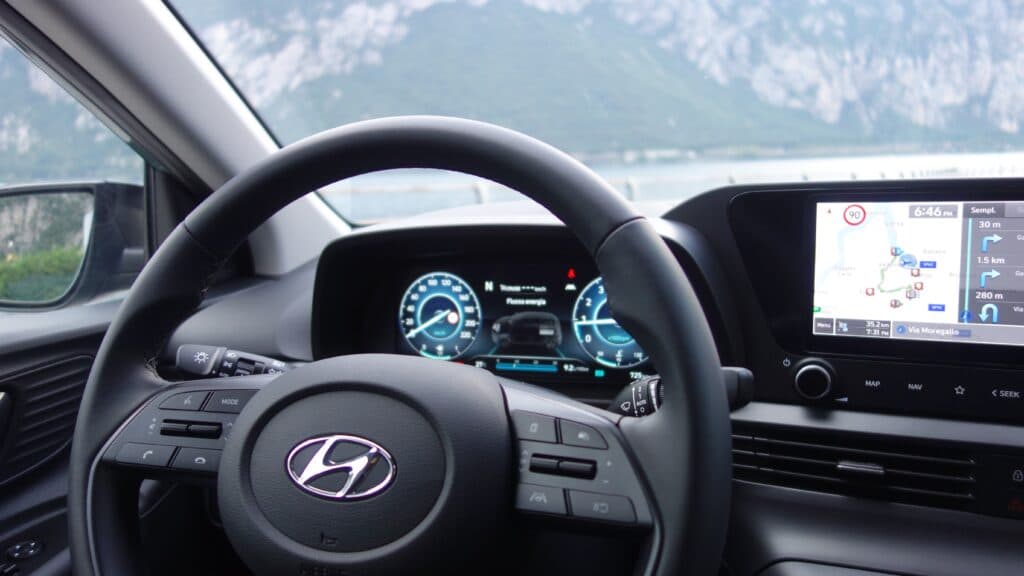
The focus of Hyundai Bayon on the inside though is on technological availability. The small Korean SUV has not only inherited from the i20 the interior and the mechanics, but also the excellent tech equipment, which we like so much. In fact, the 10.25-inch digital instrument panel is standard on all versions, beautiful to look at and very clear in the information. From the settings it is also possible to change the layout of the instruments, with the classic analog instruments replaced by very original (but not super intuitive) squares for engine revolutions and speed. In addition, Bayon offers at his side two infotainment screens. The first is 8 inchesi, has an adequate resolution but is also the only one in the range to offer Apple CarPlay and Android Auto wireless, without cable.
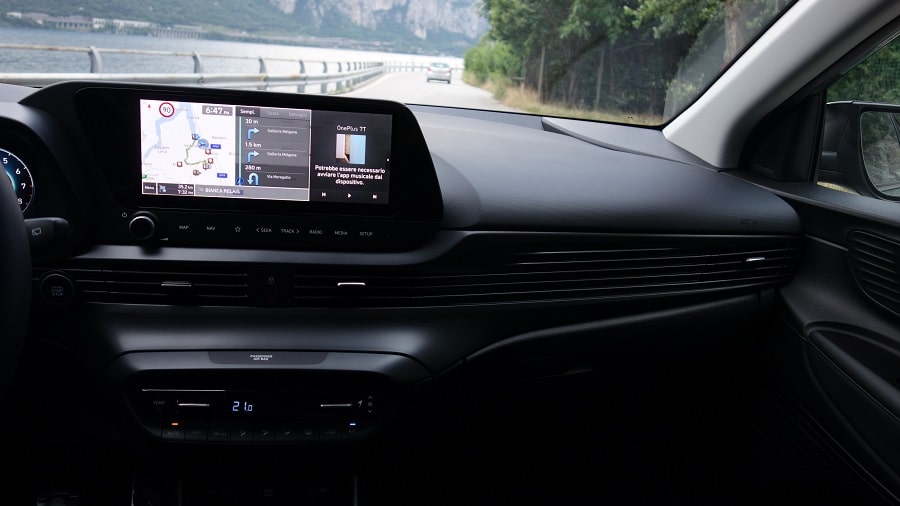
To switch to 10.25-inch versioni, also equipped with a BlueLink connection and a higher quality panel, however, you have to give up the connection to Android Auto and Apple CarPlay without a cable. A very unique peculiarity: to have the latest technology in terms of connectivity you have to choose… the basic screen. On all versions, however, there is no lack of the pad for wireless charging of enabled devices. Very good.
Roominess, trunk and ADAS at the top of the category
Even though Hyundai Bayon is the gateway to Hyundai’s SUV world, from the point of view of technological content it would not be the “smallest” of the class. And this feeling of not so small continues when you see the habitability, the space in the trunk and above all the safety equipment.
Let’s start fromhabitability, which is almost very similar to the excellent one of i20. The driving position is raised but not too high, to give that SUV feeling but without losing space and driving pleasure. The space even for the tallest is in fact excellent, with plenty of leg, shoulder and head room. Behind, compared to the i20, the air available to passengers is better, with an excellent availability of space for …






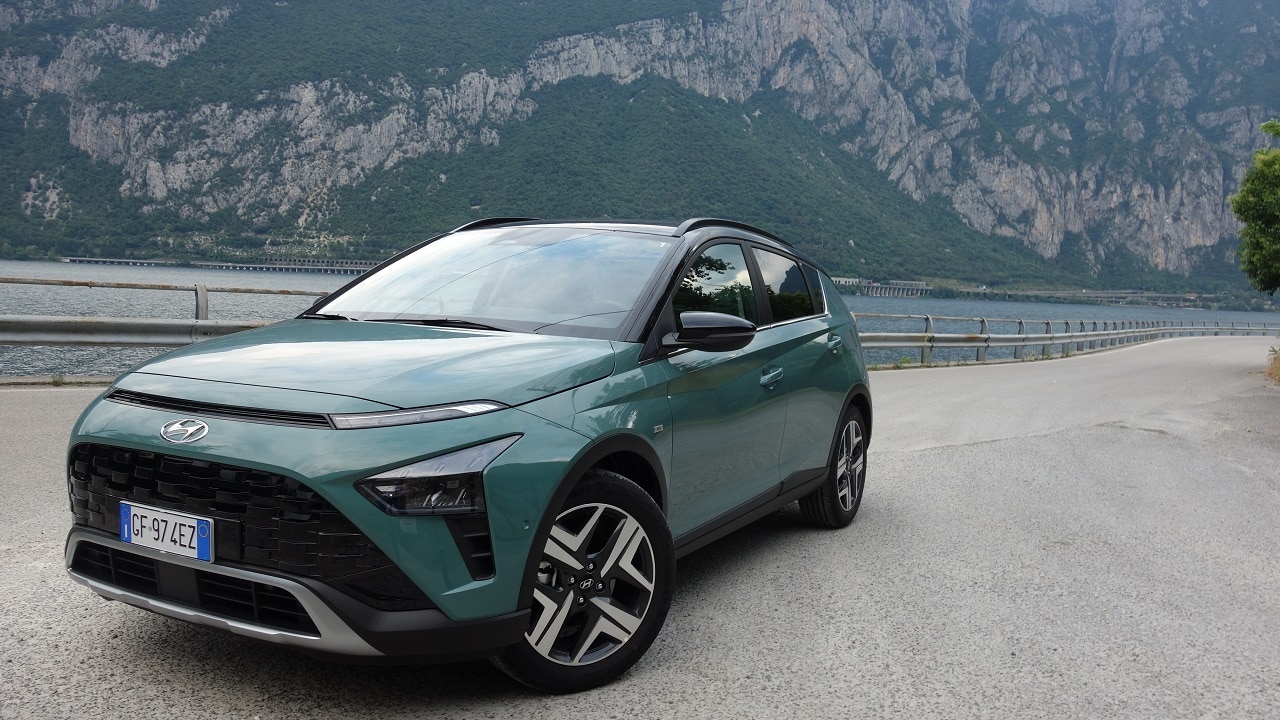
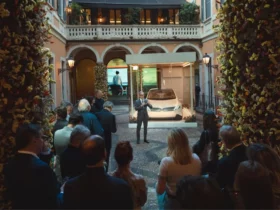

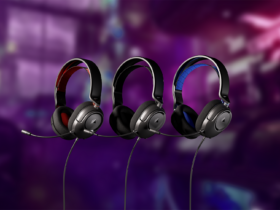


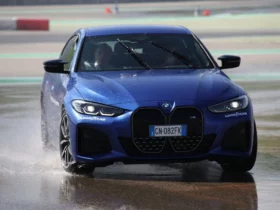
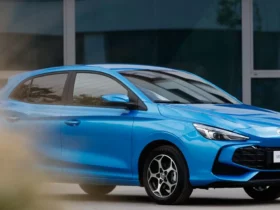
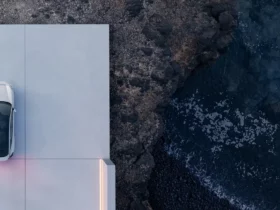
Leave a Reply
View Comments